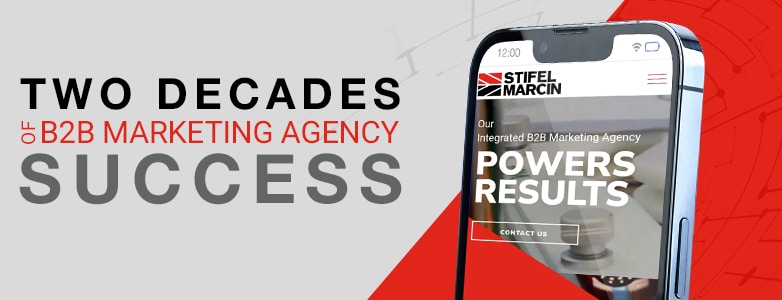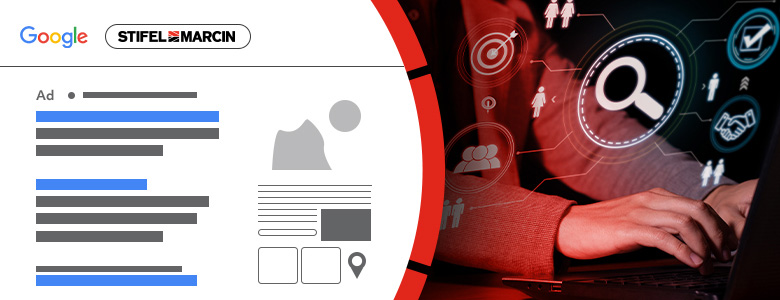The world of B2B marketing is constantly evolving. Most B2B centric companies are embracing new digital opportunities, however, for some this can be unchartered territory. No matter how much experience you have with digital marketing, it’s important to keep up-to-date with relevant digital marketing acronyms and terms which are changing and evolving every day. Knowing and understanding the correct terminology will help you effectively collaborate with your marketing agency partner and in-house teams.
20 Digital Marketing Acronyms and Terms to Help Elevate Your Vocabulary
To help, we have put together a glossary of the most common digital marketing acronyms, terms and definitions:
A/B Testing – A way to experiment with two versions of a marketing asset with two different audiences, such as versions of a landing page with different images or different calls to action. After the experiment, the version with the most clicks and/or conversions is typically chosen. In true A/B testing only one item should be modified between ad sets, allowing for true comparative evaluation. However, in some instances, entire ad sets will be run competitively.
Analytics – Digital tools that measure and report the data collected from online marketing activities. This data should be used to inform marketing strategies to improve the current customer experience, engage the right audiences and convert those you are engaging with into customers.
Audience Segmentation – Involves dividing a target audience into different sub-groups to provide each messaging. This can help form stronger connections within a target audience, as well as highlight differing topics of concern to different audiences. Some simple ways B2B marketers may segment an audience are by location, age, job function, industry, company size and more.
Bounce Rate – The percentage of visitors to a website that leave after only viewing one page. When viewing analytics reporting, lower bounce rates are better.
Call to Action or CTA– A small section of content that tells the audience what to do next, such as to call, learn more, subscribe, download, etc. Best practice is to include a CTA whenever possible.
Clickthrough Rate or CTR – The number of clicks your ad receives divided by the number of times your ad is shown = CTR. This shows how likely your audience is to click on your ad. A higher number typically indicates the quality of your ad content and your targeting relevancy in that platform or media. If you aren’t sure how your CTR stacks up – assuming you are looking to generate clicks in your campaign – contact us for an audit. We compare performance against key industry metrics for your specific market to ensure digital campaigns are running effectively.
Conversion – When a visitor has completed a desired action, such as making a purchase, submitting a form or downloading a PDF. Strategic digital marketing analytics often identifies a number of different conversion points depending on audience type and sales funnel.
Cost-Per-Click or CPC – The amount paid by the advertiser to the platform each time someone clicks on a paid ad.
Digital Marketing – Marketing campaigns and ads that appear online via computers, phones and tablets. This can include video, display ads, social media posts and email campaigns and virtually any way you see advertising content when on a screen.
Impression – The number of times an ad is shown on a user’s screen, whether it is clicked or not.
Key Performance Indicator(s) or KPI – The pre-determined benchmarks that you plan to measure as indicators of success or opportunities for improvement, such as impressions, cost-per-click, shares, form submissions, etc.
Landing Page – A specific webpage a user is brought to when clicking through to a website from an ad or an email and is usually utilized with paid advertising. Once the user is brought to the page, it typically promotes a certain benefit (such as a webinar registration, key product differentiator, consultation opportunity, etc.), prompting the user to take a desired action – often one of the identified conversion metrics.
Mobile Optimization – Adjusting the content, code, files and structure of a website to ensure the users’ experience on a smart phone, tablet or other “mobile” device is optimal. Ideally, the site should reformat to fit the requirements and features of each.
Organic Search – Search results that are not the result of a paid initiative, but rather a search engine’s evaluation of your website page content, and how relevant it is to the user’s search term. Search engines include a wide variety of factors when determining an organic ranking, including text on a page, code, background tags, text mark-up, links to the site, domain authority and more. Learn about the variety of items we optimize organic results for in our SEO services.
Pay-Per-Click or PPC – Digital advertising where the advertiser pays a set fee each time the ad is clicked. There are a wide variety of PPC advertising options, including Search Text, Display, Social Media, etc.
Remarketing – Also called retargeting, refers to the action of serving targeted ads to people who have visited your website. Many consumers do not convert on a first website visit. Remarketing can help to increase brand awareness or achieve a conversion goal.
Search Engine Marketing or SEM – Helps to increase the visibility of a website in the search engine results page by using SEO or paid advertising, typically through an integrated digital marketing strategy.
Search Engine Optimization or SEO – A process of increasing traffic to a website by improving the rank of a website on the search engine results page. Methods include optimized keyword density, backlinking and writing high-quality content. A main goal of SEO is to achieve higher success in organic search. Learn about how a comprehensive SEO audit can uncover hidden opportunities, address performance gaps, and create a clear path to sustainable growth.
Search Engine Results Page or SERP – The list of results that displays on a website page, such as on Google or Yahoo, when a user conducts a search on a search engine. It can include links as well as ads, images, maps, and more, and can be personalized to the individual user.
User Experience – Sometimes abbreviated to UX, this refers to the experience a user has when visiting a website or an app, such as ease of use, page speed, and aesthetically pleasing visuals.
Our Agency is Here to Support Your B2B Digital Marketing Efforts
Stifel Marcin uses many of these digital marketing acronyms and terms daily as we help B2B companies with the broad spectrum of their needs. If you are looking for an integrated agency to help with B2B marketing strategy, or just want to chat, fill out our contact form on this page or reach out via phone or email today.

Stifel Marcin – The B2B Marketing Agency
Unlike many advertising and marketing agencies, B2B isn’t just something that we do, it’s all we do. We’ll work to help your brand achieve its goals through the strategic combination of creativity, communication and technology. Our focused client intake processes give us the ability to thoroughly understand your business, products and objectives, working to identify the competitive advantages and opportunities that will grow awareness, leads and sales. We develop innovative marketing plans with strategic, data-driven processes, presenting complex ideas and compelling messages that position your business ahead of the competition. As your cooperative partner, our integrated B2B marketing agency is dedicated to your success. Achieve results with our maximized and measurable digital marketing agency services. Contact us today.




